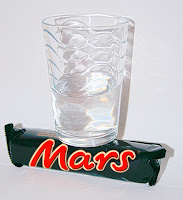Encore un sacré, et passionnant, challenge. Mais 2034 (dans le meilleur des cas), c'est loin...
Article Aerospace America, avec le titre : Designing Dragonfly, NASA’s Titan explorer
https://aerospaceamerica.aiaa.org/featu ... -explorer/
(...)
In 2034, (...) if all goes as planned. After a six-and-a-half-year cruise through deep space, punctuated by a gravity assist from Venus, a NASA-funded probe will plunge into the thick orange haze of Titan’s upper atmosphere, a heat shield protecting the planetary explorer ensconced in its aeroshell from the incandescence of atmospheric entry.
This explorer, Dragonfly, will be unique in the annals of space exploration. An octocopter roughly the size of a Mini Cooper, it will fly out of the aeroshell and descend to its nominal flight altitude of 400 meters, where it will train lidar and high-resolution cameras on the terrain below to seek a safe, solid landing spot.
(...)
“Our entry, descent and landing profile on Titan is more like two hours of concern,” says Ken Hibbard, mission systems engineer and technical lead for Dragonfly at the Johns Hopkins University Applied Physics Laboratory in Maryland.
Why so long? Titan’s smog-laden atmosphere extends up to an altitude of over 1,200 kilometers, or 10 times higher than the atmosphere of Mars. At the surface, its density is 4.3 times that of Earth’s, and its atmospheric pressure is 1.4 times higher. And with only one-seventh of Earth’s gravity gently tugging the spacecraft down, the consequence is a very slow descent indeed.
Once safely on the surface, Dragonfly can begin what its designers hope will be more than three years of science operations at dozens of sites. After landing, the drone will sample the surface material beneath it, analyze its chemistry and beam its data to Earth. But unlike wheeled rovers, it can then start its rotors again and fly off to some very different, and very distant, geological locations — using its cameras to navigate optically, informed by mapping data gleaned from flybys of NASA’s Cassini probe — and do another batch of surface science.
It’s a three-year mission because one day on Titan, known as a T-sol, is 16 days on Earth — and Dragonfly’s nominal mission length is slated at 74 T-sols, which equates to 3.2 terrestrial years. And in that time, says Hibbard, it could have flown at least 180 kilometers, perhaps more. That’s an order of magnitude more than Curiosity, which has managed 28 kilometers over its decade on Mars.
(...)
The APL team preferred a mobile explorer because Cassini, having mapped Titan over the span of 13 years and 126 flybys, found the terrain to be too highly varied to gain a broad enough spread of science results at a single rover site. There are, for instance, widely separated regions of organic sand dunes, broad and flat interdune spaces, methane and ethane rivers, lakes, seas and numerous impact craters. How could such a craft be controlled stably and also autonomously fly the many hundreds of kilometers between these sites? And how could it be powered, given that Titan’s haze makes the sun 100 to 1,000 times dimmer than on Earth?
(...)
A new kind of plutonium power source, the Multi-Mission Radioisotope Thermoelectric Generator, had been developed by Aerojet Rocketdyne and Teledyne Energy Systems under a U.S. Department of Energy contract and was being made available to NASA missions that needed one. One MMRTG had already flown on Curiosity, and another was planned for the (then upcoming) Perseverance rover.
(...)
In 2019, NASA gave the Dragonfly project the go-ahead and a budget of $850 million, excluding launch and operations costs.*
(...)
Dragonfly (...) comprises a lander body supported on skids, measuring 2.4 meters high from the ground to the top of a deployable high-gain antenna used for communicating with Earth. Four outriggers, each carrying two motors and two rotors, project from each side of the lander body, making the 450-kilogram octocopter 3.7 meters wide. And from the nose to the MMRTG containment capsule at the rear, it also measures 3.7 meters.
(...)
science package comprises:
-a mass spectrometer to identify every chemical in samples vacuumed up from the surface,
-a neutron-activated gamma-ray spectrometer to assess the broad elemental composition of the surface Dragonfly is sitting on,
-a seismometer to measure Titan’s quake activity and subsurface structures,
-meteorological and atmospheric sensors, and
-10 cameras and two lidars to image geological features and provide imagery and altitude and ranging measurements for navigation.
(...)
Where APL does need to innovate, however, is on the propulsion side, though they are aided hugely by the munificence of Titan’s physics. Thanks to the moon’s high atmospheric density and low gravity (again, 4.3 times more dense than Earth’s and one-seventh the gravity), the power needed to make a rotorcraft of a given mass hover on Titan is, astonishingly, only 2.5% of the power it would take to make the same aircraft hover on Earth. “Which is why Titan is such an ideal place to fly,” says Hibbard.
(...)
One reason Dragonfly might lose a rotor (or a motor) is the mysterious organic sand that the APL team suspects Titan’s dunes are made of: If it’s a hard particulate, debris kicked up by the rotors on multiple landing and takeoff cycles could eventually damage the rotors, especially if embrittled by the cryogenic temperatures. So one option under consideration is to make the rotors from aluminum but with a tough titanium leading edge, says Hibbard. That said, the team is also keeping an eye on NASA research into cryogenic-temperature-tolerant composites — a welcome weight saving compared to a composite rotor.
(...)
mais au prix d'une moindre performance ( Impulsion spécifique < 300 s contre > 400 s pour les moteurs hydrogène + oxygène ) qui suffit pour envoyer un pruneau à quelques milliers de km, mais pas pour partir vers la Lune...









